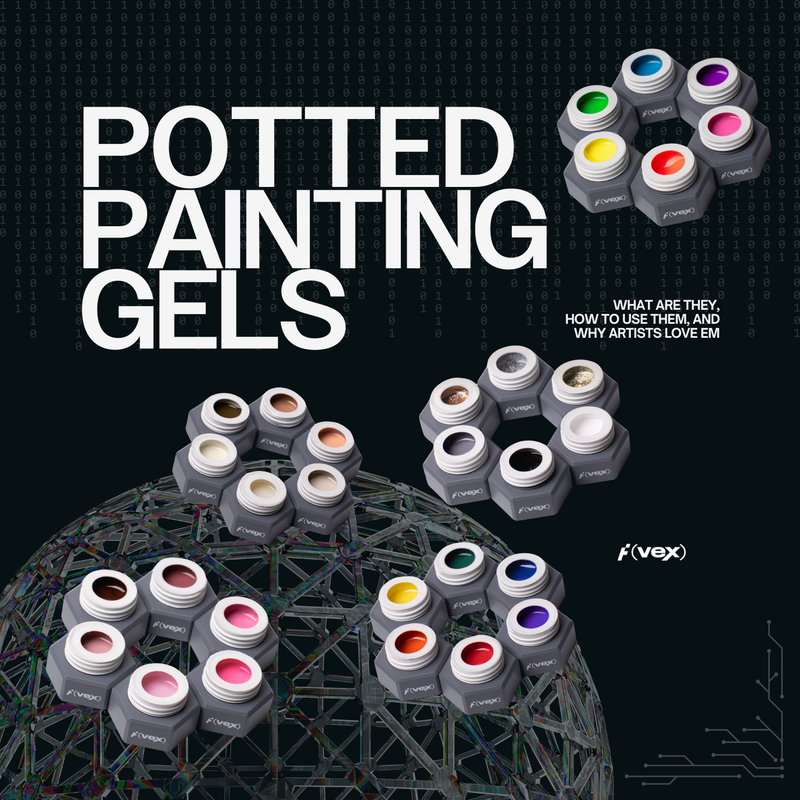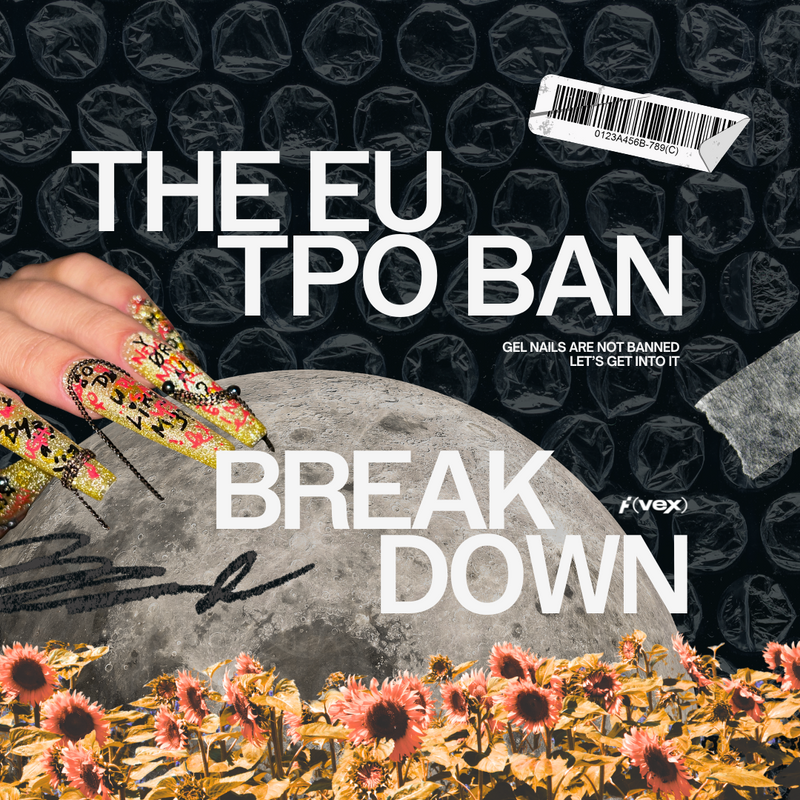Let’s get one thing straight: you don’t need a booked-out calendar to build a portfolio that turns heads.
What you do need? A little strategy, some scrappiness, and a clear sense of what you want your future clients to see.
Whether you're fresh out of nail school or self-taught on your bedroom floor, this guide will help you create a nail tech portfolio that looks like it came from someone who’s been doing this for years, even if you haven't taken a single client yet.
Why a Portfolio Still Matters (Even if You’re Just Starting)
First impressions aren’t about proving you’ve done 100 sets, they’re shaped by the kind of story your work tells and who you are as a nail artist. A strong nail portfolio gives people something to connect with: your taste, your ideas, your direction. It helps them imagine what it might be like to sit across from you and say, “Yesssss, this is the artist I’ve been looking for.”
Your nail tech portfolio tells future clients, salon owners, and collab partners where you're headed. Not just where you've been. It’s a subtle way of saying: I’m headed this way, want to come with?
Start With Practice Sets, Not Client Work
No clients? Cool. That means you get to experiment without pressure.
- Use press-ons, swatch sticks, or your own hands as your canvas.
- Build a few mini collections: maybe a grayscale sketch set, a chrome-fantasy series, or an earth-tone moodboard.
- Document your progress over time. Show how your linework tightens. Show your fails, then show the retry.
Pro tip: Practice what you want to get booked for. Want to do bold, textured nail art? Don’t spend your time perfecting French tips. Show what excites you.
Shoot It Like It’s Editorial
The fastest way to ruin great nail work? Bad photos.
Here’s what helps:
- Lighting: Window light is your best friend. No flash. No overhead yellow bulbs.
- Backgrounds: Use neutral paper, fabrics, or props that don’t distract.
- Angles: Show full hand shots and tight close-ups. Let people see the detail.
- Editing: Light touch only. Adjust exposure and color balance, but don’t blur or over-smooth.
Got a tripod and remote? Great. If not, a stack of books and your phone’s timer still get the job done.
Curate With Intention
You don’t need to post every single set you do. Your nail portfolio should feel like a collection, not a dump.
Ask yourself:
- Does this reflect my personal style or brand?
- Am I showing enough variety without confusing people?
- Would I book me after looking through this?
Mix it up:
- Include different formats: close-ups, full sets, reels, and sketches.
- Show the work you're proud of and the direction you're growing in.
Go Digital First (But Stay Flexible)
You don’t need a website to get started. Your nail artist portfolio can live in places that are free and easy to update:
- Instagram: Use pinned posts, Highlights, or a separate portfolio grid.
- Canva: Build a clean, scrollable PDF.
- Notion or Google Drive: Great for linking in bios or sending to salons.
Keep your layout simple:
- About You
- Art Examples (grouped by style or collection)
- Contact or Booking Info
Build Social Proof Without Clients
Social proof doesn't have to be a bunch of reviews. It can simply be you showing that you take your craft seriously.
Here’s how to build trust while you’re still solo:
- Collaborate with friends or fellow beginners.
- Ask for quotes from teachers, mentors, or anyone who's seen your growth.
- Film your process: a sped-up video of you painting a mini mural says more than a caption ever could.
Even a screenshot of a "holy sh*t these are so good" text from a friend can add warmth and personality.
Nail Art as Storytelling: Add Captions and Context
Your visuals hook people. But your captions build trust.
Instead of just dropping an emoji or polish name, try this:
- Share what inspired the set: a painting, a song, your current hyperfixation
- Talk about the technique: was it dry-brushed? Layered with texture?
- Keep it short, but human. Show your voice.
Example:
"Practicing petal layering with OILWHIP today. I wanted it to look like a little cake frosting moment but still wearable. Still learning brush pressure, but this one made me pause and smile like a proud mama."
Mistakes to Avoid When Building Your Nail Portfolio
- Over-editing: If your nails look airbrushed, people won't trust the finish.
- Inconsistent style: Avoid jumping from kawaii to minimalist to goth in one scroll.
- Being vague about your level: You don’t have to say "beginner" in every post, but don’t pretend to be fully booked either.
- Reposting other people’s work: Show your own skills. Your inspo folder isn’t your portfolio.
FAQs
How do I introduce myself as a nail tech?
Keep it short and confident. Say who you are, what you love doing, and where you're based.
Example:
"I’m Rae, a nail artist based in LA, specializing in sculptural nail art and painterly designs. Booking soon! DMs open for collabs and test sets."
Can I have a nail portfolio without clients?
Yes, and you should. Use practice sets, DIY press-ons, mock bookings, and styled photos to build a portfolio that reflects your style. Focus on showing your potential and your growing skill, not your client list. We LITERALLY all have to start somewhere, so have fun with it, enjoy the process and keep showing up for yourself.
What should be included in a beginner nail tech portfolio?
- A short artist intro
- Photos of your work (practice or personal sets)
- A sense of your style or specialties
- Contact info or booking instructions

Ready to Build Your Nail Portfolio?
Every artist starts with blank swatch sticks and shaky brush strokes. Your early portfolio is your playground and your proof of concept.
So get scrappy. Get obsessive. And show the world what you’re building.
Tag us @functionofvex in your mock sets, flat lays, and future-booked calendars. We’re always watching the up-and-comers.
Looking for other tools as a beginner?
Our VEX Ed program is here to guide your growth, with real artist education, not just fluff.
And if you're wondering what to start with?
Here are 3 go-to products to help you kick off a portfolio that slays:
- Hi-Def Topcoat | Our ol' reliable and dependable glossy topcoat with a thick viscosity that levels over any surface imperfections in your art when you're starting out. We gotchuuu!
- Flex Tints | They're color AND base in one, talk about a gamechanger for your art and your kit.
- Chromafix | Makes isolated designs EASY using any color, metallic or not! The sheer black tint helps you see what and where you're painting, which is a huge bonus for beginners.
See you on the feed, Vexie!!!



